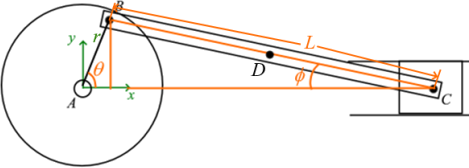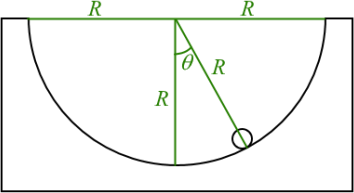ENGPHYS 2CD4 Final Lab Exam, Fall 2022
Hello, dear friend, you can consult us at any time if you have any questions, add WeChat: daixieit
ENGPHYS 2CD4 Final Lab Exam, Fall 2022
Overview:
This is an individual lab exam for 2.5 hours. Due date for the individual submission is 2.5 hours after the start of this lab test period, to the drop box on A2L. After that time, you have the option to work with others and complete a resubmission (just like with the lab tests), and the due date for the resubmission is Friday December 23rd at 9:00 AM (also to the same dropbox).
If you submit multiple files we'll mark the most recent on-time submission during the individual time or group time window. If no such submission exists for the individual part you'll get a 0 for it. If no submission exists for the group part, we'll use your individual part's mark as your group part's mark.
Dealing with Last-minute Technical Difficulties Uploading to A2L:
If submitted after the deadline for either part, your submission will be considered late and not marked.
Begin uploading your work 5 minutes before the deadline in case you run into sudden technical difficulties. If you are having difficulty uploading your work and alert a TA at least 2 minutes prior to the deadline we may be able to note that you stopped working at that point and accept it shortly (i.e., 1-2 minutes) after the deadline (as long as we can verify that you didn’t edit the solution or work on it further in any way before submitting it, AND didn’t start collaborating with anyone if the file is the individual part). In situations where A2L is not responding, emailing your solution file to a TA can suffice as a backup.
Other Technical Difficulties:
TAs will not be able to answer technical questions or offer technical support for problems with software during the individual part of the lab. If something in the question is unclear, interpret it as reasonably as you can in the context of this lab test and proceed to the best of your abilities.
To anticipate and address software problems, ensure you’ve tried out solving similar problems with the same computer in as similar of a situation as possible to the lab test itself. Remember that Maple is case sensitive but FlexPDE is not. FlexPDE saves prior to each execution, but Maple does not, so save data often; if programs freeze or misbehave in strange ways, you should terminate them, re-open the file, and try again (make sure you know how to do all of this in advance in case it comes up).
If FlexPDE has a runtime error saying the timestep has become too small, it usually means you have a divide by zero error e.g., you meant to use a damping force like -|v|*b but you forgot the negative so it makes the system accelerate more the faster it’s going and blows up.
If Maple outputs nothing from dsolve or solve, it usually means it can’t find a solution. Double check what you told it to solve and make sure that your variables are named exactly the same as you meant. PI and pi are not 3.14159 in Maple; Pi is.
Note where you're working on your computer (i.e., which folder you're saving your files in) and make sure you're indeed saving to this folder, then be ready to access it to upload easily to A2L when the time comes.
File Format:
Your submission should be typed, contain your best attempt at the correct solution, and just enough detail that your TA will be able to understand what you did and that you understand it. Your final answer for each question should be clearly presented so the TA can identify it.
Figures and equations can be produced by hand and included via photographs, or produced with computer tools as you prefer, as long as they are easy to follow.
You should submit
1. a pdf copy of your report, PLUS
2. [because it's difficult to copy and run code from pdfs], either
a. the Maple or FlexPDE files themselves (as applicable) OR
b. a word doc copy of your report, ensuring code is copy-paste-able as one block (like in many of the course practice problem solutions)
Any code should be easy to follow and run (which means uploading separate code files and/or placing code in your submitted file in a format that lets the TA copy-paste it into their programs to run; e.g., if you don’t submit separate code files, then you should submit your assignment as a word doc in addition to a pdf, and ensure code is copy-paste-able as one block).
Note that regardless of how you provide your full code or produce your figures or equations, you must include them in the main body of your report in a way that the TA can easily follow your work. i.e., don't refer them to the appendix or a code document to see the next part of the explanation – assume they're only going to look at the main body of your pdf writeup of your answers as they mark each question.
Resources:
Except for adding photographs, downloading the lab test question file at the start, and uploading your answer file to the A2L drop box once you are done, no internet is allowed during the test.
No communication (in person, via phone, via internet, or any other medium) with other students is allowed during the individual part.
You can use any amount of offline resources you like during this lab test as long as you have saved them on your computer in advance of the test start time. This includes course notes and practice problem files with answers, and code that you, the course, or anyone else created for the assignment or any other relevant problem.
Grading:
To get any marks for each part you must answer the question that is being asked.
To have a chance at full marks you must answer the question correctly and must also show enough detail that the TA can understand what you did.
Unlike the lab tests, during the exam for some heavy-calculation parts (e.g., code that relies on answers from previous parts or initial inputs), a correct enough process that results in a wrong answer due to incorrect inputs or a minor typo can result in part marks rather than 0 as long as we can follow your process and see where you went wrong (or ideally, you identify what went wrong by completing the optional group redo submission, explaining exactly went wrong by pointing out all of the corrections you made, just like the group redos for the lab tests.)
Optional Group Part Resubmission:
After 2.5 hours into the lab exam (i.e., after the time is complete) when directed by the TAs you may begin collaborating with others to share and compare answers, making any corrections or improvements to your work, noting where you initially went wrong (i.e., identifying any changes you make), and eventually resubmitting your new and improved answer submission to the same drop box on A2L (Friday December 23rd at 9:00 AM). If you are happy with your first submission you can opt to not resubmit anything and your initial mark will apply to both it and the re-submission.
The Questions
1.

A rigid disc centred at A is connected to a rigid bar via a frictionless pin at point B (a distance r = 0.2 m from point A) which is connected to a piston via a frictionless pin at point C (a distance L = 0.95 m from point B). The piston moves frictionlessly in a channel that only allows it to move in x (and not in y or z), but is subject to both a spring force and damping force in the x-direction of ![]() , where
, where ![]() is the position of the piston (relative to the origin),
is the position of the piston (relative to the origin), ![]() is its position when
is its position when ![]() (when the spring is unstretched), k = 4 kN/m, and b = 40 N/(m/s).
(when the spring is unstretched), k = 4 kN/m, and b = 40 N/(m/s).
The disc, bar, and piston have masses and mass-moments of inertia about their centres of mass as given in the following table:
|
|
Disc |
Bar |
Piston |
|
Mass [kg] |
5 |
2 |
4 |
|
IG [kg-m2] |
0.16 |
0.15 |
0.003 |
The axle of A rotates the disc at a constant angular velocity of ![]() , [providing whatever moment M is required to do so].
, [providing whatever moment M is required to do so].
a) [2 marks] Letting point A be the origin and  be the position of the bar's CoM (which is a distance of distance L/2 from point B), find and plot xD and yD vs. t and xD vs. yD for one full rotation of the disc (i.e., from
be the position of the bar's CoM (which is a distance of distance L/2 from point B), find and plot xD and yD vs. t and xD vs. yD for one full rotation of the disc (i.e., from ![]() to
to ![]() , letting
, letting ![]() when
when ![]() ).
).
Hint: You can use Maple or FlexPDE to do this as you prefer; note that in Maple, you can plot y vs. x on the range t = 0..3 with the following syntax:
> plot([x, y, t=0..3]);
b) [3 marks] Determine the net work done by the axle at A on this system each rotation.
2.

A solid gold ball (![]() ) of radius
) of radius ![]() and mass m = 0.8 kg rolls without slipping inside a halfpipe of radius R = 30 cm (gravity with acceleration g = 9.81 m/s2 acts in the downward direction). At time 0, the ball is released from
and mass m = 0.8 kg rolls without slipping inside a halfpipe of radius R = 30 cm (gravity with acceleration g = 9.81 m/s2 acts in the downward direction). At time 0, the ball is released from ![]() and experiences a drag force with
and experiences a drag force with ![]() ,
, ![]() , and
, and ![]() , where v is the ball's CoM's speed.
, where v is the ball's CoM's speed.
Note: don't assume that ![]() ; distance from pivot point to CoM of the ball is
; distance from pivot point to CoM of the ball is ![]() which is not approximately R.
which is not approximately R.
a) [1 marks] Draw an FBD for the ball at a time when ![]() and
and ![]() .
.
b) [2 marks] Find an explicit expression for ![]()
c) [2 marks] Assuming ![]() , find the natural frequency
, find the natural frequency ![]() and quality factor Q of this system.
and quality factor Q of this system.
2023-02-23